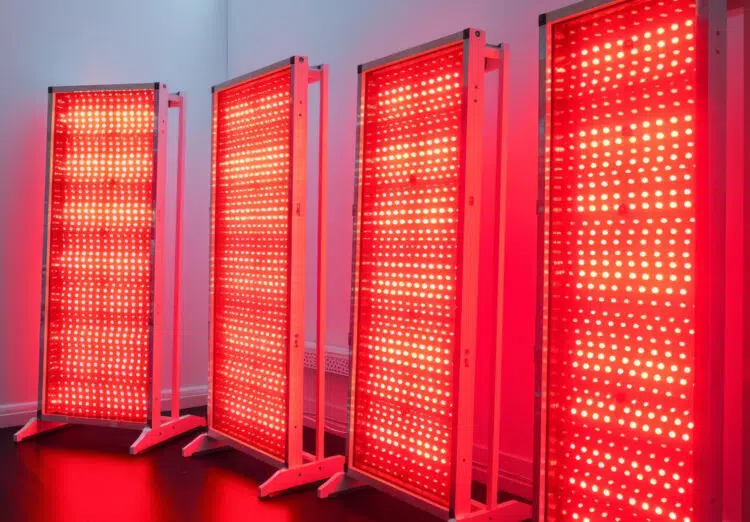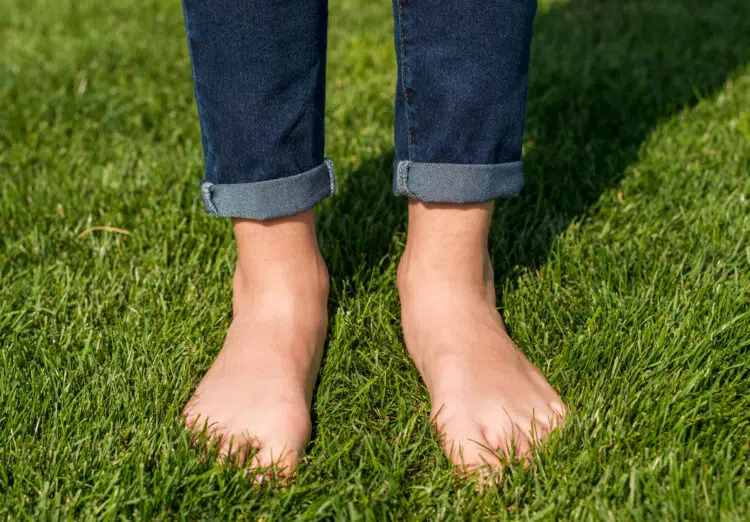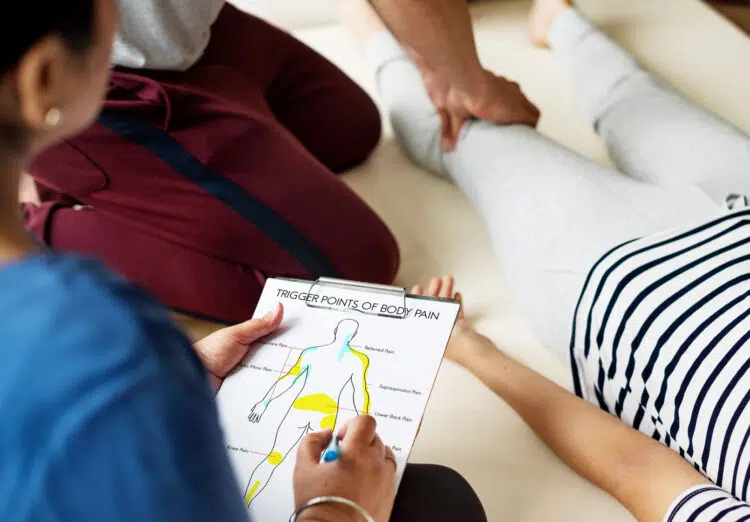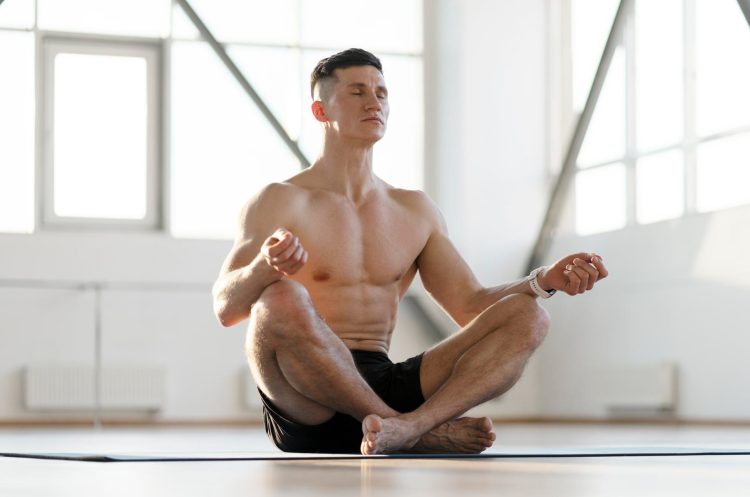Humans are constantly evolving, and this is also what has kept us on the top of the food chain. In the past few decades, we have doubled down on holistic health and wellness, which is the key to increasing our lifespan.
To be honest, the diet and exercise space is pretty saturated, and more new fad regimes are introduced these days than ever.
However, biohacking shows real promise in helping us achieve our goals.
Biohacking can be described as do-it-yourself (DIY) biological experiments. It involves making incremental changes to the body, diet, and lifestyle to improve the qualities or capabilities of living organisms.
Biohacking is mainly done by individuals and groups working outside a traditional medical or scientific research environment.
At a basic level, biohacking involves taking a proactive, personalized approach to your overall health. It’s about exploring cutting-edge research and testing new methods on yourself to attain an edge. Biohacking is the mirror opposite of the cookie-cutter approach most people in the fitness industry follow.
Level Up Your Fitness: Join our 💪 strong community in Fitness Volt Newsletter. Get daily inspiration, expert-backed workouts, nutrition tips, the latest in strength sports, and the support you need to reach your goals. Subscribe for free!
In this article, I reveal the 10 most effective and scientifically-backed biohacking techniques that will help you unlock peak performance. I’ll also touch upon how to implement each of them in your routine to boost your recovery, strength, and endurance.
10 Super-Effective Biohacking Methods For Better Mental & Physical Health
Add these techniques to your daily routine:
1. Red Light Therapy
Red light therapy (RLT) is one of the biggest trends in the fitness space right now. Dana White (CEO of Ultimate Fighting Championship) uses this biohacking method to reduce muscle inflammation, boost muscle tissue recovery, and promote healthy aging. (1)
This technique involves shining a red (near-infrared) light onto the skin. The red light penetrates deep into your tissues, reaches the mitochondria (the cell’s powerhouse), and boosts energy production.
RLT has also been shown to treat skin issues like stretch marks, wrinkles, and conditions such as psoriasis, scars, and acne. However, more scientific evidence is needed to back all the claims.
Although RLT is typically safe and painless, there have been some reports of burns, lesions, and blistering from using RLT units. Experts recommend starting this treatment with a limited time (up to 10 minutes) and slowly increasing the sessions.
Tip: To get the best bang for your buck with these techniques, you must learn how to implement them correctly. I highly recommend seeking a professional’s help to pick the right machine and understand how to position yourself to maximize results.
2. Cryotherapy
Cryotherapy literally means “cold therapy” and involves exposing your body to extremely cold temperatures for several minutes. Many elite athletes have adopted cryotherapy in the form of cold water plunges to ease sore muscles, reduce core body temperature, boost focus, and lower muscle and joint inflammation. (2)
Intense cold triggers several physiological responses in the body that can be a game-changer for easing delayed-onset muscle soreness (DOMS). Cryotherapy can also promote endorphin release, which can further ease discomfort and improve mood.
Cryotherapy is one of the hottest things in the fitness world right now, and many cryotherapy clinics are popping up across the world. Furthermore, you can also use home-based cold plunge tubs to benefit from this technique.
Remember, get your doctor’s clearance before trying cryotherapy, especially if you’re dealing with existing health issues.
3. Grounding (Earthing)
Grounding is one of the most effective and easy-to-implement biohacking principles. It involves reconnecting you with the earth’s natural energy.
Thanks to the plush midsoles of the latest high-tech shoes, we’ve forgotten to walk barefoot. In contrast, our ancestors walked barefoot and slept on the ground.
The earth has a subtle negative charge, and your body absorbs those electrons when you have direct skin-to-skin contact with it. These electrons are incredibly potent antioxidants that can help eliminate free radicals and boost your recovery. (3)
Grounding has also been shown to improve chronic fatigue and pain, lower anxiety and depression, fix sleep disorders, and reduce blood pressure.
Improved mental clarity is the biggest benefit I’ve attained from implementing this technique in my daily routine. To be honest, there aren’t many other natural ways to do this.
Some of the most common types of grounding include walking barefoot, lying on the ground, submersing in water, and using grounding equipment like mats, sheets, socks, and patches.
4. Neurostimulation
The brain controls the body. Neurostimulation prioritizes optimizing and fine-tuning the brain signals for better focus, faster reaction times, and even reduced pain.
Neurostimulation can also help in pain relief by disrupting the pain signals traveling between the spinal cord and the brain. It involves using devices to stimulate the nervous system and influence your brain and nerve activity. The two main methods involve: (4)
- tDCS: A non-invasive technique that uses a weak electrical current to stimulate specific brain areas.
- TMS: Uses magnetic fields to stimulate nerve cells to influence brain activity.
Neurostimulation can help sharpen your focus, improve movement patterns and motor control, and boost recovery.
Neurostimulation therapies are usually offered by specialized clinics and you must consult a qualified professional to determine the right course of action for yourself.
5. Intermittent Fasting
Intermittent fasting (IF) is one of the most popular dieting protocols of the current generation. It involves alternating between periods of voluntary fasting and eating. The time-restricted feeding gives your body a break from constantly digesting food, allowing you to focus on other important tasks, like recovery.
Level Up Your Fitness: Join our 💪 strong community in Fitness Volt Newsletter. Get daily inspiration, expert-backed workouts, nutrition tips, the latest in strength sports, and the support you need to reach your goals. Subscribe for free!
Autophagy — the process of replacing decaying cells with newer ones — is one of the most important benefits of adopting IF. It can also give you a metabolic boost, increase growth hormone production, and help you burn more fat throughout the day. (5)
Alternate-day fasting, 16/8, and eat-stop-eat are some of the most popular IF methods.
IF is accessible for most individuals. However, you must pick a protocol that best fits your current experience level and fitness objectives. Adopt a balanced diet and training program to maximize the effectiveness of intermittent fasting.
6. Heat Therapy
This is the opposite of cryotherapy. Studies show that using heat on an injury might be more beneficial than icing. Heat therapy relaxes and dilates the blood vessels, increasing the blood flow to the target muscles. This might help reduce tension in the joints and relieve sore muscles. (6)
Heat therapy can boost cardiovascular health, lower stress levels, relieve muscle tension, and enhance recovery and endurance.
There are two main types of saunas that you can choose from. The traditional saunas use heated rocks or a stove to raise the temperature. On the other hand, infrared saunas use lamps to heat your body directly. Infrared saunas don’t get as hot as the traditional ones, but the heat generated penetrates deeper into your tissues.
7. Hyperbaric Oxygen Therapy (HBOT)
HBOT can be one of the most intimidating biohacking methods, as it involves entering a pressurized chamber. However, the good news is that you breathe in pure oxygen, which increases the amount of oxygen your blood can carry and ensures it reaches every muscle tissue.
HBOT can help boost recovery, reduce inflammation, and maximize physical performance. (7)
Unlike many other techniques on this list, HBOT is administered in specialized clinics by trained professionals. Although this method is generally safe, some anecdotal evidence suggests ear barotrauma and oxygen toxicity.
8. Sleep Optimization
Although many people understand that optimal sleep quantity and quality are essential for optimal recovery, most have no idea how they can biohack this crucial recovery period — until now.
Begin by tracking your sleep. If you wake up feeling grumpy even after eight hours of sleep, there might be potential disruptions that must be addressed. I recommend wearing a sleep tracker to identify the areas of improvement.
Many of my personal training clients report significantly better sleep when they retire to a dark and cold room. Plus, eliminating any screen time a couple of hours before hitting the sack can make a big difference.
Finally, aim for a consistent sleep schedule. Going to sleep and waking up at the same time daily helps regulate your body’s natural sleep-wake cycle. It helps boost your recovery, allowing you to train harder in the gym, resulting in better strength and muscle gains.
9. Breathwork Techniques
Breathwork is one of the most underrated biohacking techniques.
Although breathing is so fundamental that we’ve been doing it our whole life, most of us haven’t paid close attention to how it affects our mood and energy levels. Mindfully changing how you breathe can help unlock your maximum potential.
Breathwork can improve focus, lower stress levels, manage fatigue, and even help you excel at physically intensive tasks like strength training. (8)
There are several breathwork practices that you can choose from or alternate between. The most popular methods include diaphragmatic, transformational, holotropic, clarity, and rebirthing breathwork.
10. Nutrient Timing
It is no secret that eating nutrient-dense, whole foods can significantly improve your overall health and well-being. But did you know that eating your meals at strategic times during the day can help you achieve certain fitness outcomes, including better muscle growth and fat loss and enhanced athletic performance?
Most of us rush for a protein shake after a workout. This is an example of nutrient timing.
Although research on nutrient timing is still being conducted, it’s safe to say that eating a balanced meal before a training session can help boost your performance and give you a competitive edge. (9)
Similarly, refueling with the right food during a workout can help sustain physical output and kickstart recovery.
As far as the current scientific literature goes, it pays to time your pre-workout meals, especially if you have not eaten for several hours before the session. Post that, you should focus on meeting your daily calorie and macronutrient goals to ensure optimal endurance, strength, and muscle gains.
Conclusion
Irrespective of your training experience, you will eventually hit a plateau, and your usual routine will feel ineffective. This is a sign that you must dip your toes into biohacking. The 10 biohacks listed in this article are some of the most potent and can help improve your overall health and performance.
Remember, some biohacks are relatively safe and can be done by anyone at home. In contrast, others may pose significant health risks and might lead to varied results. Begin with one biohack at a time and add more as you get more comfortable and gain more experience.
Learn to listen to your body. Discontinue a method if something feels weird or unnatural, and consult your healthcare provider. Furthermore, pick the techniques you can incorporate into your lifestyle and stick to for the long term.
Like other fitness routines, consistency, dedication, and discipline are vital for seeing results with these biohacking methods. Stick with these techniques for at least eight to 12 weeks to achieve noticeable improvements.
If you have any questions about the biohacking techniques listed in this article or need help implementing them in your routine, post them in the comments below, and I’ll be happy to help!
References:
- Avci P, Gupta A, Sadasivam M, Vecchio D, Pam Z, Pam N, Hamblin MR. Low-level laser (light) therapy (LLLT) in skin: stimulating, healing, restoring. Semin Cutan Med Surg. 2013 Mar;32(1):41-52. PMID: 24049929; PMCID: PMC4126803.
- Lee YH, Yoon JH, Song KJ, Oh JK. Effects of Cool-Down Exercise and Cold-Water Immersion Therapy on Basic Fitness and Sport-Specific Skills among Korean College Soccer Players. Iran J Public Health. 2021 Nov;50(11):2211-2218. doi: 10.18502/ijph.v50i11.7575. PMID: 35223595; PMCID: PMC8826325.
- Oschman JL, Chevalier G, Brown R. The effects of grounding (earthing) on inflammation, the immune response, wound healing, and prevention and treatment of chronic inflammatory and autoimmune diseases. J Inflamm Res. 2015 Mar 24;8:83-96. doi: 10.2147/JIR.S69656. PMID: 25848315; PMCID: PMC4378297.
- Edwards, C. A., Kouzani, A., Lee, K. H., & Ross, E. K. (2017). Neurostimulation Devices for the Treatment of Neurologic Disorders. Mayo Clinic proceedings, 92(9), 1427–1444. https://doi.org/10.1016/j.mayocp.2017.05.005
- Vasim, I., Majeed, C. N., & DeBoer, M. D. (2022). Intermittent Fasting and Metabolic Health. Nutrients, 14(3), 631. https://doi.org/10.3390/nu14030631
- Hussain J, Cohen M. Clinical Effects of Regular Dry Sauna Bathing: A Systematic Review. Evid Based Complement Alternat Med. 2018 Apr 24;2018:1857413. doi: 10.1155/2018/1857413. PMID: 29849692; PMCID: PMC5941775.
- Ortega MA, Fraile-Martinez O, García-Montero C, Callejón-Peláez E, Sáez MA, Álvarez-Mon MA, García-Honduvilla N, Monserrat J, Álvarez-Mon M, Bujan J, Canals ML. A General Overview on the Hyperbaric Oxygen Therapy: Applications, Mechanisms and Translational Opportunities. Medicina (Kaunas). 2021 Aug 24;57(9):864. doi: 10.3390/medicina57090864. PMID: 34577787; PMCID: PMC8465921.
- Ma X, Yue ZQ, Gong ZQ, Zhang H, Duan NY, Shi YT, Wei GX, Li YF. The Effect of Diaphragmatic Breathing on Attention, Negative Affect and Stress in Healthy Adults. Front Psychol. 2017 Jun 6;8:874. doi: 10.3389/fpsyg.2017.00874. PMID: 28626434; PMCID: PMC5455070.
- Neufer, P. D., Costill, D. L., Flynn, M. G., Kirwan, J. P., Mitchell, J. B., & Houmard, J. (1987). Improvements in exercise performance: effects of carbohydrate feedings and diet. Journal of Applied Physiology (Bethesda, Md.: 1985), 62(3), 983–988. https://doi.org/10.1152/jappl.1987.62.3.983


















